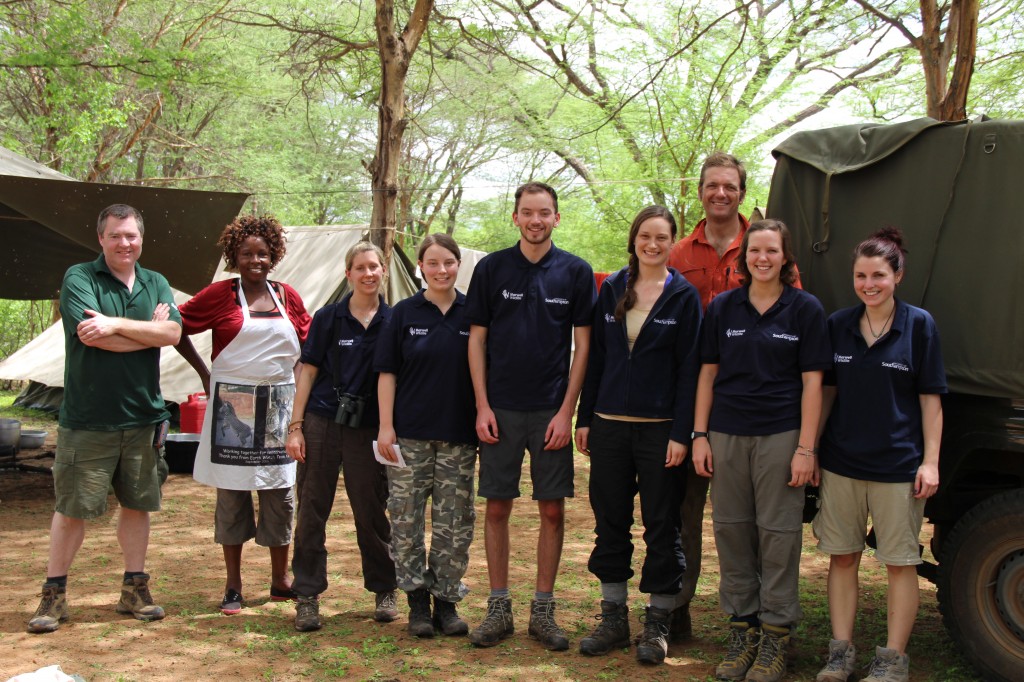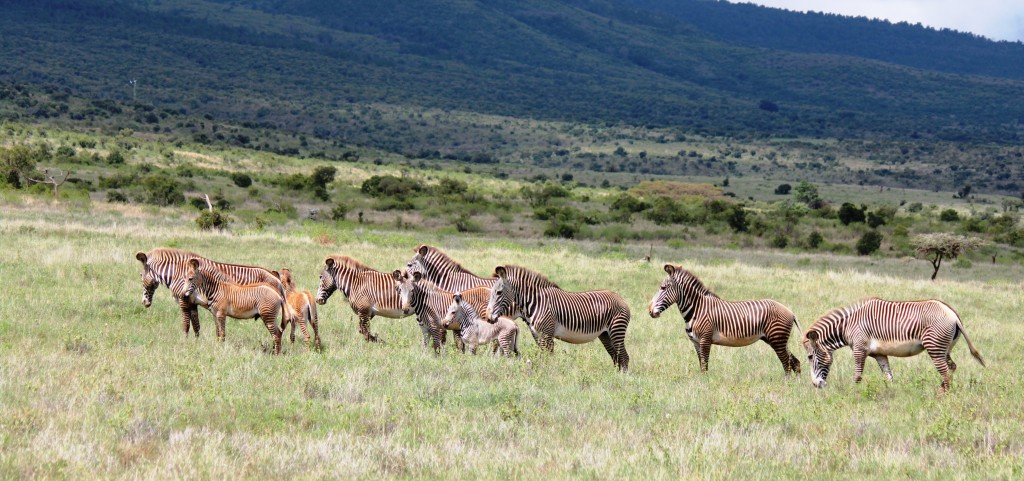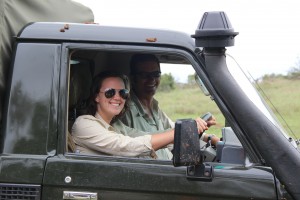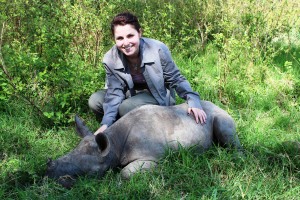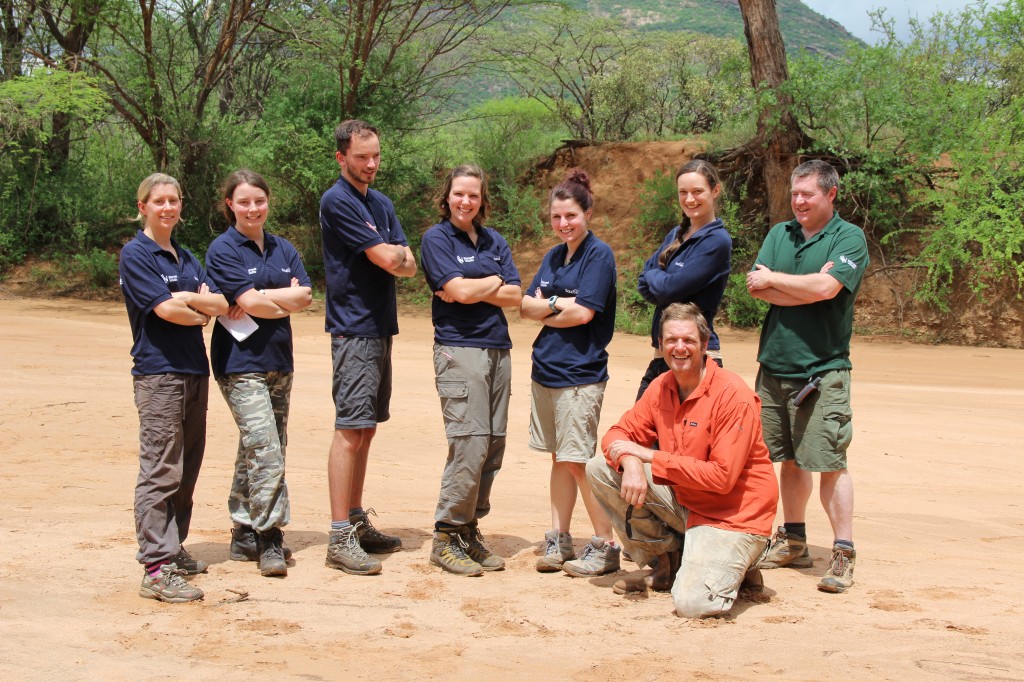This post is a brief flavour of our field course to Kenya back in November and is written by Natalie and Laura. Both of our research projects are based in Kenya so this trip was particularly exciting for us as we got to see where we would be gathering our data!
During the field course we were able to experience a wide variety of conservation research techniques. This gave us a good overall picture of the amazing work already going on in Kenya and the type of projects we could one day hope to be involved in. The course was led by Dr Zeke Davidson, one of Marwell’s Conservation Biologists; we were also joined by Dr Tim Woodfine, the Director of Conservation at Marwell.
For the majority of the time, we stayed on Lewa Wildlife Conservancy in very comfy beds and with excellent food provided by a wonderful lady called Caro. We also ventured out to a community conservancy called Kalama and a cattle ranch called El Karama, camping in both locations. The camping was very luxurious with spacious tents, hot meals prepared by Caro and even a shower tent with a hot shower!
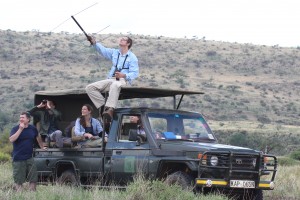 Our first adventure on Lewa was to try and find one of the collared lions called Mufasa; yes really he is called Mufasa, a joy for all you Disney fans out there. We used telemetry equipment to locate him, only to find he was sleeping in a bush so could not be seen! The GPS collars are very useful pieces of equipment for the Lewa research team as they upload a record of the lion’s GPS locations to a computer programme every six hours, enabling the team to locate them accurately and track their movements throughout the conservancy.
Our first adventure on Lewa was to try and find one of the collared lions called Mufasa; yes really he is called Mufasa, a joy for all you Disney fans out there. We used telemetry equipment to locate him, only to find he was sleeping in a bush so could not be seen! The GPS collars are very useful pieces of equipment for the Lewa research team as they upload a record of the lion’s GPS locations to a computer programme every six hours, enabling the team to locate them accurately and track their movements throughout the conservancy.
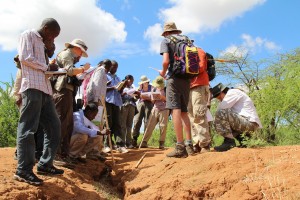 During our stay on Kalama Community Conservancy we were trained, alongside community scouts, in the Northern Rangelands Trusts’ vegetation monitoring methodology. Feedback about the technique from the majority of the scouts was extremely positive; they really want to help improve the environment on their community land, not only for themselves but also the wildlife, which was heart-warming to learn. We also learnt how to evaluate the tracks around a waterhole to find prime locations to set up our camera traps; we were rewarded with photographs of dik diks, jackals, elephants, Grevy’s zebra and hyena! Use of camera traps in field research is invaluable because images of animals rarely seen by humans can be obtained. The cameras can also be left for weeks at a time, gathering information to be analysed at a later date.
During our stay on Kalama Community Conservancy we were trained, alongside community scouts, in the Northern Rangelands Trusts’ vegetation monitoring methodology. Feedback about the technique from the majority of the scouts was extremely positive; they really want to help improve the environment on their community land, not only for themselves but also the wildlife, which was heart-warming to learn. We also learnt how to evaluate the tracks around a waterhole to find prime locations to set up our camera traps; we were rewarded with photographs of dik diks, jackals, elephants, Grevy’s zebra and hyena! Use of camera traps in field research is invaluable because images of animals rarely seen by humans can be obtained. The cameras can also be left for weeks at a time, gathering information to be analysed at a later date.
Back on Lewa we all got involved with the monthly foal patrol. The aim of the game is to record every Grevy’s zebra on Lewa, with a particular focus on the foals. A photo of the right flank of each individual is taken and is later entered into the National Identification Database. A few days later we visited the Mpala Research Centre where the National Identification Database is located; a researcher called Michael Brown is responsible for this. He taught us about how the database works and told us about the development of an exciting new technique to take identification photos with a flying robot! All the data and identification photos taken during the monthly foal patrol days at Lewa and in other areas in northern Kenya are processed on one laptop by this guy and a few trained helpers. The process is very time-intensive, matching stripe patterns by eye to individually identify the Grevy’s zebra to allow tracking of the movement of individuals across Kenya.
Our last stop was a cattle ranch called El Karama. Here we got to see lion and leopard-proof cattle bomas (where the cattle are kept at night) which we were able to compare with the bomas we had seen on Kalama Community Conservancy. The most striking difference was that these were made of metal fencing, whereas on Kalama the bomas were made from branches and were not as robust. We were also treated to lesson in tracking techniques and identifying scat during a bush walk lead by Zeke and a few guards. We were joined on our walk by a lone bull elephant kept at a safe distance by the guards.
Other highlights from the trip were being taught 4×4 vehicle maintenance, having a driving lesson in the 4×4, conducting a behaviour study, meeting three baby rhinos and setting up a plane for an aerial survey. We all had an incredible time in Kenya and learnt a vast array of field skills, which will be invaluable for our projects and also any field work we undertake in our future careers. We are very grateful to the amazing team who put the field course together – thank you!
Posted By : lmp1e13
